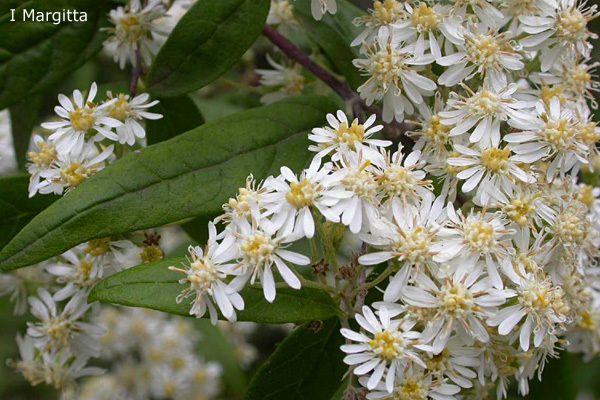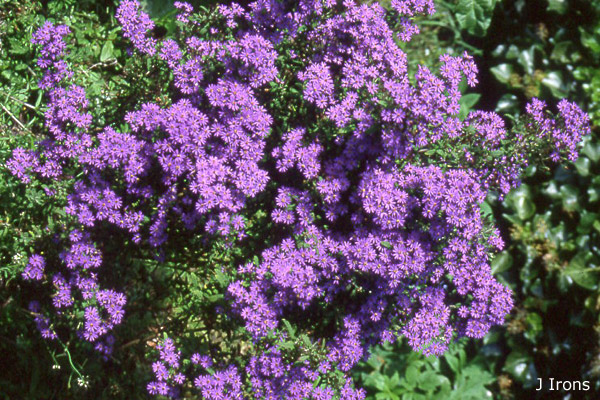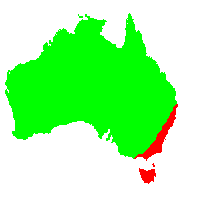General Description:
The genus Olearia is found in Australia, New Zealand and New Guinea and has about 130 species native to Australia. They are generally small to medium shrubs commonly known as “daisy bushes”.
Olearia phlogopappa is usually a small shrub up to 1.5 metres high by a similar width but may be taller in some areas. The greyish green foliage is variable over the range of the species but leaves are typically oblong or narrow elliptical in shape, about 40 mm long and often with a dusty appearance on the upper surface. The well-displayed, daisy flower heads may be white, pink or mauve and occur in spring and early summer. The flower heads are about 20-25 mm in diameter.
With a few exceptions, olearias are not commonly seen in cultivation. O.phlogopappa is probably the best known species, particularly the mauve form which is widely available. It is a hardy shrub for well drained, moist soils in full sun or semi shade and can be very spectacular in flower. Like many species in the genus, it can become leggy and sparsely foliaged with age and annual pruning after flowering is recommended to restore vigour. The species is tolerant of at least moderate frost and, once established will tolerate extended dry conditions but is unlikely to look at its best unless ample water is available.
Propagation of O.phlogopappa may be carried out from seed but germination may be unreliable. Propagation from cuttings of current season’s growth is usually not difficult.

White form of Olearia phlogopappa
Photo: Ivan Margitta

Mauve form of Olearia phlogopappa
Photo: Jeff Irons
 Australian Native Plants Society (Australia)
Australian Native Plants Society (Australia)